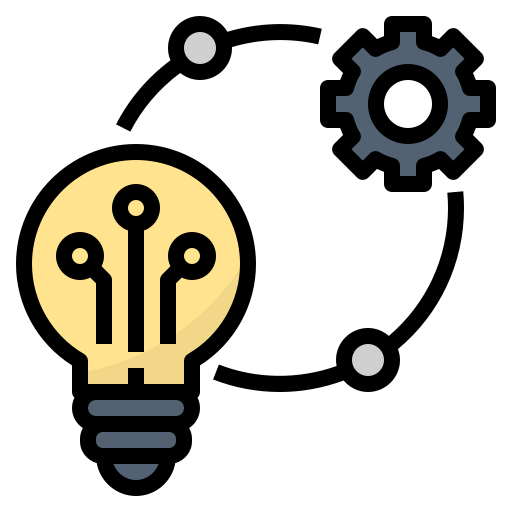Edge AI Advantages
The significant advantages offered by Edge AI are:
-
Improves Customer Experience by lowering prices and lag times. This makes it easier to integrate wearable devices based on the user experience, such as bracelets that monitor workout and sleep habits in real time.
-
It raises the standard of protection for data privacy via local processing. Data is no longer transmitted in a consolidated cloud.
-
Technically, a decrease in needed bandwidth could decrease the cost of the contracted internet service.
-
Data scientists and AI developers are not required to maintain edge technology computers. It is an automated technology, and the graphic data flows are delivered dynamically for monitoring.
Machine learning pipeline helps to automate ML Workflow and enable the sequence data to be transformed and correlated together in a model to analyzed and achieve outputs. Click to explore about, Machine Learning Pipeline Deployment and Architecture
How Edge AI Functions
Edge AI is a modern way of machine learning and artificial intelligence, allowed by computationally more efficient edge computers. In a typical machine-learning scenario, we train a model on a suitable dataset for a particular task. Training the model entails programming it to identify trends in the training datasets. Inference takes comparatively little computing power, while training a machine learning model is a computationally costly activity well suited for the cloud.
The rise of low-cost computing, data storage services, and cloud technology has opened up new avenues for deploying machine learning at scale. However, owing to bandwidth constraints, this comes at the expense of latency and data processing problems. The model is worthless if the data transmission fails, so the forecasts must also be transmitted to the end device. It's easy to see how this solution will fail in mission-sensitive systems with critical low latency. The cloud is the future of machine learning.
Edge Federated Learning Trends
As federated learning at the edge continues to evolve, several emerging trends are shaping its future:
-
Interoperability with Blockchain Platform
The application of federated learning and the integration of the blockchain system are becoming increasingly popular. The decentralisation and data storage levels inherent in blockchain can benefit model updating processes by increasing the reliability of asset modification records. Trust between participants can be enhanced, making federated learning more secure and less prone to leakage. -
Techniques that make the Utilisation of AccuWeb Services More Personalised
There is much demand for something unique; thus, federated learning innovations are on the rise. Methods of sub-model selectivity improvement, including local fine-tuning and productive learning, are gradually embedded. Such approaches enable them simultaneously to learn user-specific preferences and still build on shared knowledge among various models. -
AI for Iot Applications
The evolution of many ‘smart’ Iot devices poses interesting possibilities for federated learning. Since Iot devices produce and collect huge amounts of data, implementing federated learning allows for decentralised model training across devices while maintaining data confidentiality. This development direction especially concerns fields related to smart home systems, healthcare, and industrial applications. -
Privacy-Preserving Protocols
This is why the need for privacy-preserving protocols for federated learning is becoming crucial as the world becomes more worried about data privacy. Appreciation of approaches, which include differential privacy, secure multi-party computation, and homomorphic encryption, is being embraced to increase the security of federated learning. Figure 1: Illustrates Differential Privacy
Figure 1: Illustrates Differential Privacy -
Federated Transfer Learning
Federated transfer learning is a combination of federated learning and transfer learning techniques. This approach enables models learnt on one task to be reused or assigned to a new but related task for other devices. Federated transfer learning improves the model’s accuracy while addressing the problem of a lack of data on individual devices.
Cloud Inference Architecture
Edge AI is a modern way of machine learning and artificial intelligence, allowed by computationally more efficient edge computers. Unlike in the conventional environment, where the inference is performed on a cloud computing network, Edge AI allows the model to run on the edge computer without constant connectivity to the outside world. Training a model on large datasets and applying it to output is analogous to cloud computing.
Edge-based architecture - inference happens locally on a device.
The GDPR imposes major constraints on the training of machine learning models. Attackers see the centralised database as a lucrative target. The belief that edge computing alone will address privacy issues is incorrect. Federated learning is a viable solution for tackling the above problems. Federated learning is the technique for training a machine learning algorithm through many client devices without requiring direct access to the results. Only model updates are sent back to the central server.
Edge AI is the class of ML architecture in which the AI algorithms process the data on the edge of the network (the place where data is generated, i.e., locally) instead of sending it to the cloud. Click to explore about, Edge AI in Manufacturing
Federated learning Process Described
Edge computing will not completely overtake cloud computing but will operate with it. In general, cloud computing is a safer choice if the implementations are tolerant of cloud-based latencies. Edge computing is the only viable option for systems that involve real-time inference.
The Two Approaches in Comparison
Distributed large batch testing is akin to classical training, in which the data is stored in one central place. Federated learning is difficult to deal with batches that aren't uniformly spread. For federated learning to perform well, the distribution of classes across devices must be as close as possible. The output degrades when local dataset distributions are highly inconsistent and non-IID.
A Preliminary Empirical Comparison
Big Batch, for example, necessitates higher learning speeds because applying the same parameters across all methodologies will be ineffective. We needed consistency for the by-epoch analogy to make sense.
Edge technologies can deliver faster, more reliable operations and more profit margins. Large companies like Amazon and Google have been spending millions on advancing their Edge AI solutions. Data must be stored in the cloud, but user-generated data will be run and processed on the Edge. The increased demand for Iot applications would facilitate the introduction of 5G networks.
.webp?width=1921&height=622&name=usecase-banner%20(1).webp)








